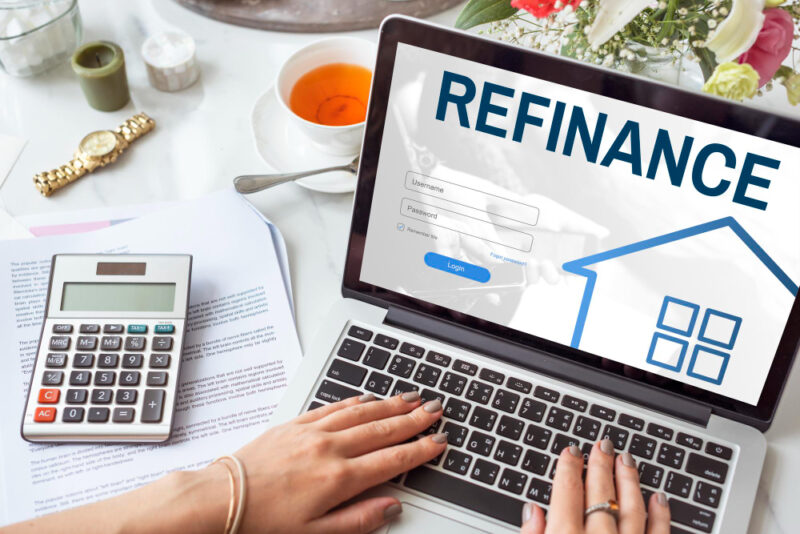Refinancing is the process through which a consumer takes out a new loan with better terms and conditions to repay an existing loan. The new loan can be used to pay off a single loan or multiple loans. The major reason for refinancing is usually because interest rates are lower and the terms of the new loan is better than the existing one.
Collateral on the other hand is an asset that is put forth as security to get a loan. The asset can be of the same value or higher than the sum applied for. Credit facilities that are backed by collaterals usually have better terms and conditions than those without.
In this article, we will explore the benefits of refinancing your loan with collateral; with a focus on using the equity on your home for refinancing.
Understanding Home Equity
Your home equity is the market value of your home after deduction of what you owe on the mortgage. Your gain on your home can come from making payments to bring down the balance on the principal on your mortgage. Additionally, an increase in the market value of the home over time can also be beneficial to you.
The equity on a home rises and falls over time based on the payments that are made on the credit facility and market forces which influences the current value of the property. It represents just more than the payments that are made on the credit facility; its stands as an asset for the homeowner which can be used as collateral for refinancing or even taking out fresh loans.
When you take out a loan with your home equity as collateral, the interest rate is usually lower than that of personal loans or credit cards. So investing in housing,or ibolig in Norwegian, can be a smart investment that will enable you secure funds at lower cost than without collateral. Additionally, interests on funds borrowed from equity backed loans are usually tax deductible more so if the money is used for home improvement.
What are Collateral Loans?
These are also known as secured loans and they are backed by an asset of equal or higher value than the amount applied for. The most common types of these credit facilities are auto credits and mortgages. There are other forms that are not as popular and they include the following:-
- RV
- Boat
- Certificates of deposits
- Boat
- Investment portfolio
- Jewellery
- Insurance policy
The above items can be used in collateral loans to secure lower interest rates or larger amounts.
Most times this is the only way that consumers with an unsteady or short credit history can get substantial sums as loans. People with low income that do not qualify for the amount they seek can also use any of these assets to get the amount they need.
Advantages and Disadvantages of Secured Loans
Much as secured loans are wonderful for those who have assets that they can put down which makes it possible for them to get large sums, there are also some downsides to this type of credit facility. This is why it is highly important that you weigh all the options and the pros and cons before taking out this type of credit.
Below we share some of the advantages and disadvantages of collateral loans:-
Advantages
- Enables consumers with Low Credit Score/History to Access Funding – Like we mentioned briefly above, people with low credit score or a short credit history can access large sums of money with the right collateral. This is because the lender sees them as lower risk customers; in the event that they default on payment, the collateral can be sold to recover the debt.
- Generally Offers Larger Sums and Lower Interests than Unsecured Credits– Following from the first point, lenders see consumers with collateral as low risk borrowers and as such can give them larger sums than those without security. Additionally, the terms and conditions of the facility which includes the interest rate are often lower than that of unsecured facilities. This is also based on the risk factor of the two types of facilities.
- Enables Borrower Improve their Credit Score – With a secured credit, a borrower gets to build a strong credit history and improve on their financial history. With diligent repayments, the borrower’s credit score improves.
Disadvantages
- Available Only to Customers that have Valuable Asset
- It is often more difficult to access due to rigorous paper work during application.
- Borrower stands the risk of losing their valuable asset in the event of any default in repayment.
How to Effectively Refinance With Collateral in Home Equity
Like we mentioned earlier, you can use your home as collateral to get funding. With this new loan, you can refinance an existing credit whether personal, student, medical or auto. We have already shared the advantages and disadvantages of exploring this option.
If you have weighed the pros and the cons and decided that it is the best route to go, the following steps will help make approval easier for you:-
Check your Credit History
To get a secured loan, you might not necessarily need to have a great credit history or score. However, a great credit history/score will further help you not only get approved but be able to negotiate better terms and conditions on the refi; this also includes lower interest rate.
You can check your credit score for free on Experian, Equifax or other such site. When checking the score, look out for any error with your documentation. If you find any, ensure that they are corrected to reflect the true state of your credit history before going ahead to apply for loan.
Know your Home Equity
It is important that you find out what your home equity is as this will determine the leverage you have for negotiation. This point is sometimes complicating for some homeowners especially those who are not financially savvy. If you fall into this category, there’s no need to fear or worry; you can always get the right figures and percentages from your mortgage bankers.
The total sum that makes up your home equity is the balance left after you subtract the sum you have paid on the mortgage from the total value of the home. You can get this information from your payment reports.
Based on the amount of equity you have on your home, you will now know the sum of money that you can borrow, bear in mind that you cannot borrow on the entire equity. You are required to have some percentage of equity left after you have taken out the loan. Visit https://bettermoneyhabits.bankofamerica.com/ for more tips.
Get your Documents Ready
As you start out on the application process, it is important that you have all your documents ready so that the process can be as seamless and as fast as possible. Find out all the documents that will be required of you from the lenders that you are considering applying to.
Check out as Many Lenders as Possible
Check out as many lenders as possible to find the one that will give you the best terms and conditions. Bear in mind that multiple applications will harm your credit score so it is best to try pre- application. This will help you get quotes online without hurting your credit score as they will only carry out a soft check on your credit.
Apply to the Lender of your Choice
Once you have carried out all the necessary research and settled on a lender, go ahead and apply. Bear in mind that once you apply to a lender, a hard credit check will be carried out on you which will reflect on your credit report. That is why it is important to be very sure of a lender before applying officially.
Conclusion
Refinancing a debt or debts sometimes is the only way to get out of the debt faster or get better terms for paying off the debt. In this article, we have shared basic information about home equity, collateral loans, pros and cons of these types of loans and how you can effectively access them. We believe the information shared here will help you to make informed decisions going forward.










